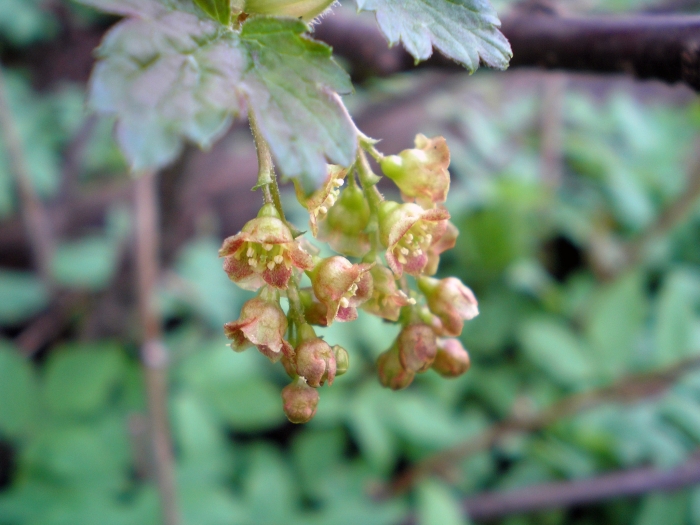Nordic Currant
(Ribes spicatum)
Nordic Currant (Ribes spicatum)
/
/

Татьяна Максимова
CC BY 4.0
Image By:
Татьяна Максимова
Recorded By:
Copyright:
CC BY 4.0
Copyright Notice:
Photo by: Татьяна Максимова | License Type: CC BY 4.0 | License URL: http://creativecommons.org/licenses/by/4.0/ | Rights Holder: Татьяна Максимова | Publisher: iNaturalist | Date Created: 2007-05-09T15:41:38-07:00 |

























Estimated Native Range
Summary
Ribes spicatum, commonly known as Nordic Currant or Downy Currant, is a deciduous shrub native to boreal forests and subarctic riverbanks of Northern Europe and Western Asia. It typically grows at a moderate rate to a height of 3-6 feet (0.9-1.8 meters) and a width of 3-4 feet (0.9-1.2 meters). The plant features racemes of small, bell-shaped greenish-white flowers that bloom in late spring, followed by edible red berries in summer. The berries are a food source for birds and can be used in jams and jellies. The leaves are lobed and have a downy texture, which is where the common name ’Downy Currant’ comes from.
Nordic Currant is valued for its wildlife-friendly attributes and its ability to thrive in cooler climates. It is used in naturalistic plantings, as a fruiting hedge, and for erosion control on banks and slopes. In cultivation, it prefers full sun to part shade and adapts well to a variety of soil types, including clay, loam, and sandy soils, provided they have medium drainage. Regular watering is important, especially in dry periods. While generally low-maintenance, Ribes spicatum can be susceptible to pests such as aphids and diseases like powdery mildew. Pruning after fruiting helps maintain a healthy and productive plant.CC BY-SA 4.0
Nordic Currant is valued for its wildlife-friendly attributes and its ability to thrive in cooler climates. It is used in naturalistic plantings, as a fruiting hedge, and for erosion control on banks and slopes. In cultivation, it prefers full sun to part shade and adapts well to a variety of soil types, including clay, loam, and sandy soils, provided they have medium drainage. Regular watering is important, especially in dry periods. While generally low-maintenance, Ribes spicatum can be susceptible to pests such as aphids and diseases like powdery mildew. Pruning after fruiting helps maintain a healthy and productive plant.CC BY-SA 4.0
Plant Description
- Plant Type: Shrub
- Height: 3-6 feet
- Width: 3-4 feet
- Growth Rate: Moderate
- Flower Color: Green, White
- Flowering Season: Spring
- Leaf Retention: Deciduous
Growth Requirements
- Sun: Full Sun, Part Shade
- Water: Medium
- Drainage: Medium
Common Uses
Bird Garden, Low Maintenance
Natural Habitat
Boreal forests and subarctic riverbanks
Other Names
Common Names: Downy Currant, Currant, Jærek, Jærekak, Jærjek, Spiked Currant, Kislica, Northern Red Currant
Scientific Names: , Ribes spicatum, Grossularia rubra, Ribes petraeum var. spicatum, Ribes pubescens,
GBIF Accepted Name: